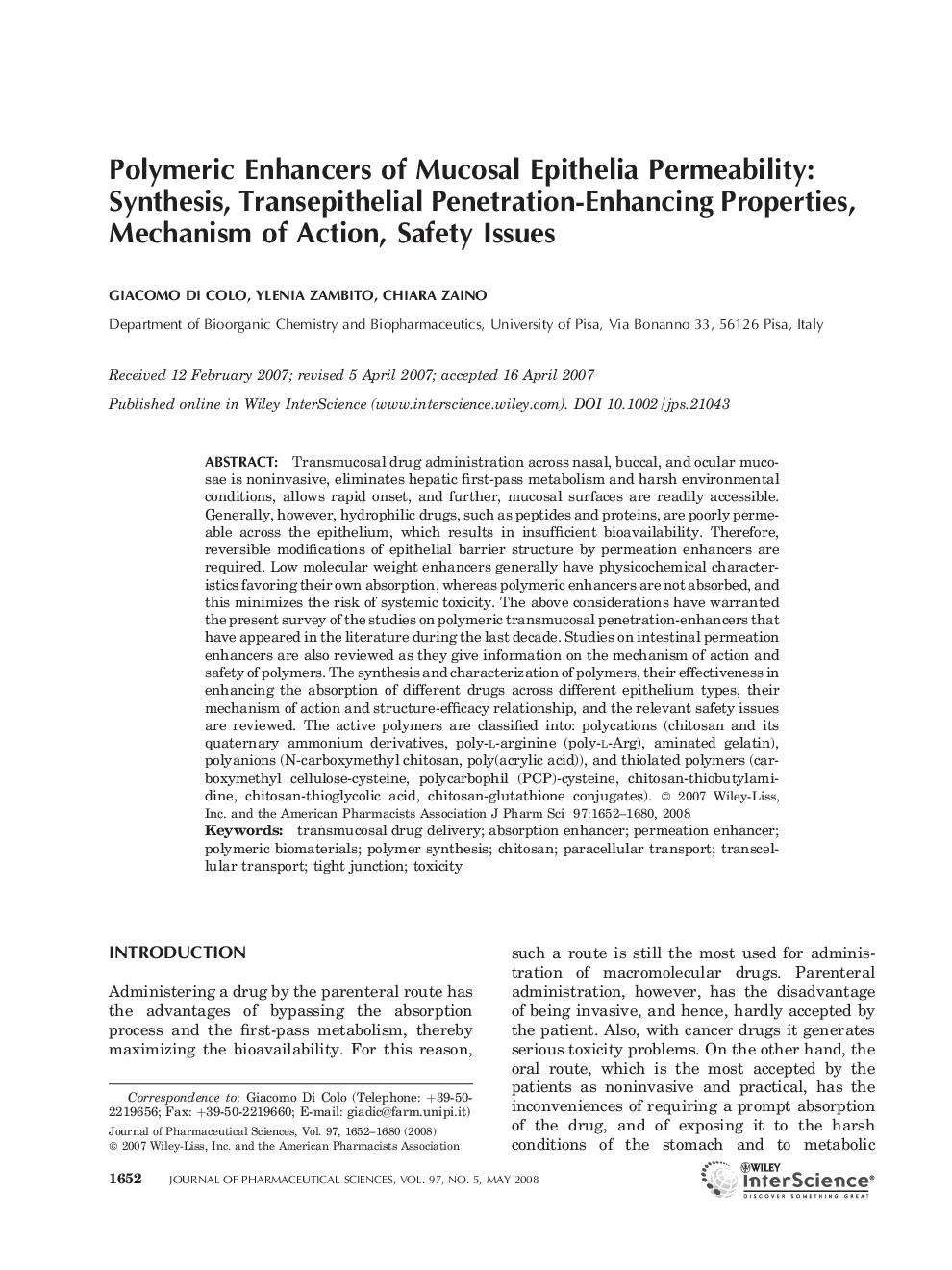| Article ID | Journal | Published Year | Pages | File Type |
|---|---|---|---|---|
| 2485663 | Journal of Pharmaceutical Sciences | 2008 | 29 Pages |
Abstract
Transmucosal drug administration across nasal, buccal, and ocular mucosae is noninvasive, eliminates hepatic firstâpass metabolism and harsh environmental conditions, allows rapid onset, and further, mucosal surfaces are readily accessible. Generally, however, hydrophilic drugs, such as peptides and proteins, are poorly permeable across the epithelium, which results in insufficient bioavailability. Therefore, reversible modifications of epithelial barrier structure by permeation enhancers are required. Low molecular weight enhancers generally have physicochemical characteristics favoring their own absorption, whereas polymeric enhancers are not absorbed, and this minimizes the risk of systemic toxicity. The above considerations have warranted the present survey of the studies on polymeric transmucosal penetrationâenhancers that have appeared in the literature during the last decade. Studies on intestinal permeation enhancers are also reviewed as they give information on the mechanism of action and safety of polymers. The synthesis and characterization of polymers, their effectiveness in enhancing the absorption of different drugs across different epithelium types, their mechanism of action and structureâefficacy relationship, and the relevant safety issues are reviewed. The active polymers are classified into: polycations (chitosan and its quaternary ammonium derivatives, polyâLâarginine (polyâLâArg), aminated gelatin), polyanions (Nâcarboxymethyl chitosan, poly(acrylic acid)), and thiolated polymers (carboxymethyl celluloseâcysteine, polycarbophil (PCP)âcysteine, chitosanâthiobutylamidine, chitosanâthioglycolic acid, chitosanâglutathione conjugates).
Keywords
Related Topics
Health Sciences
Pharmacology, Toxicology and Pharmaceutical Science
Drug Discovery
Authors
Giacomo Di Colo, Ylenia Zambito, Chiara Zaino,
